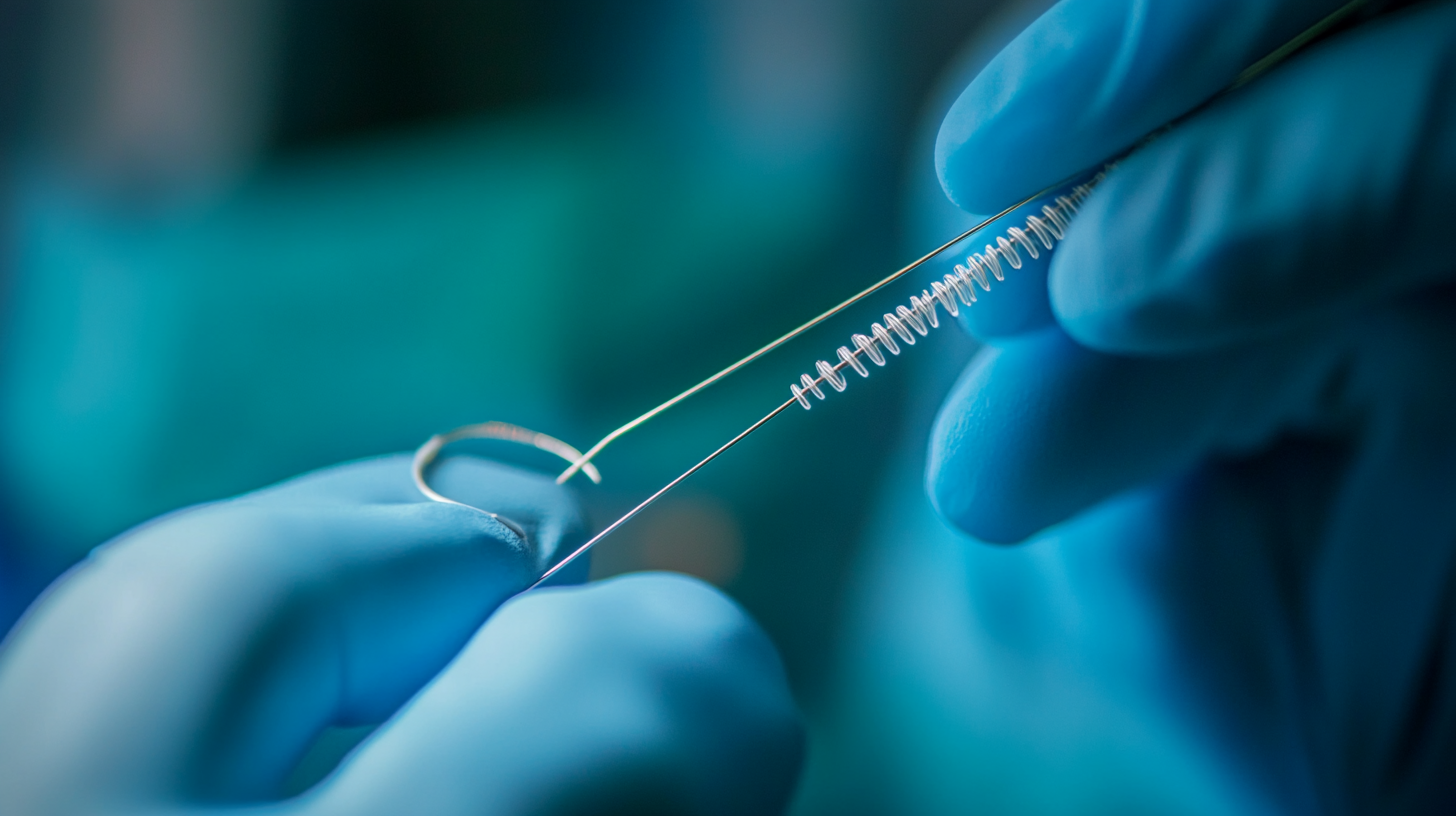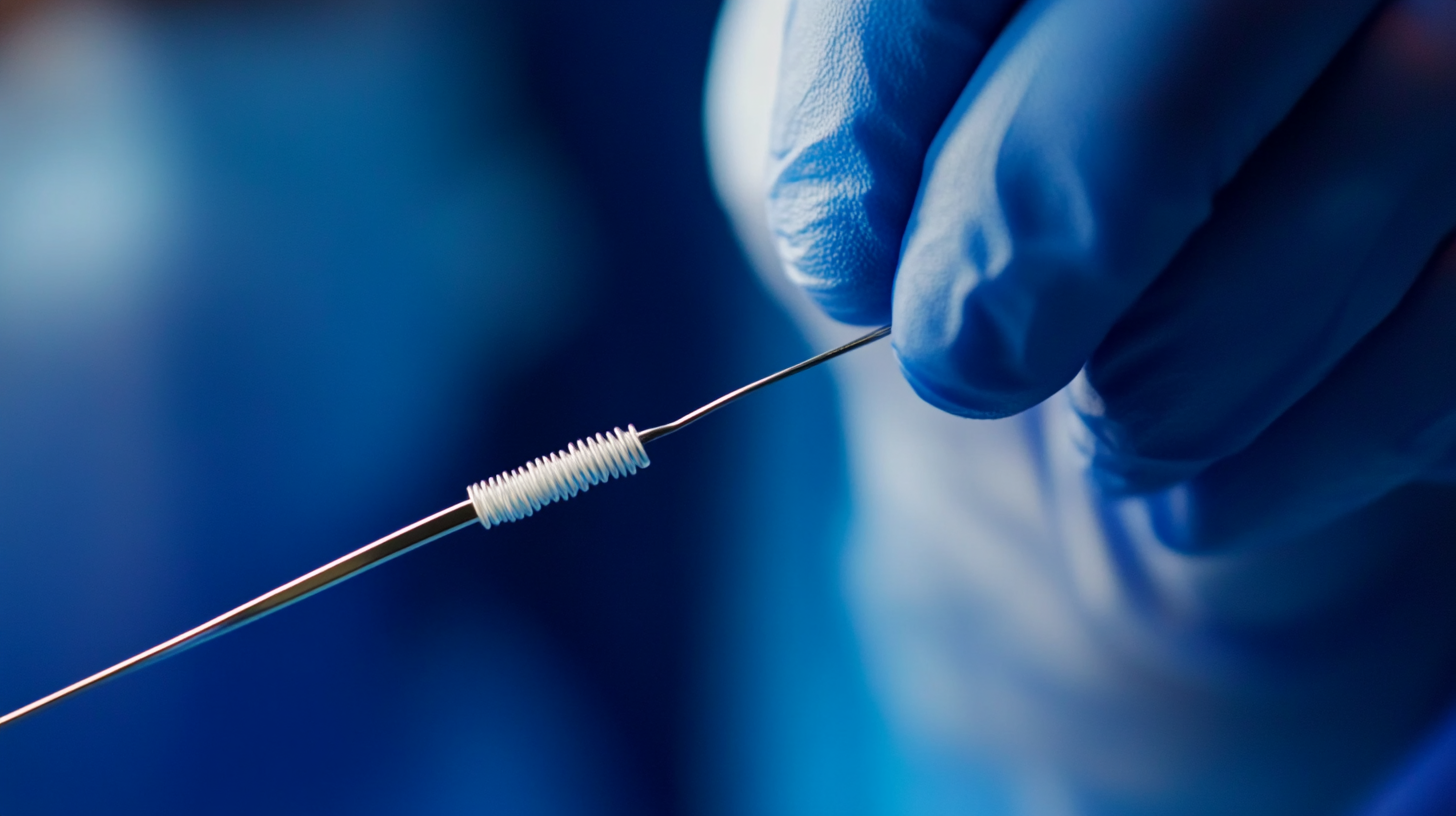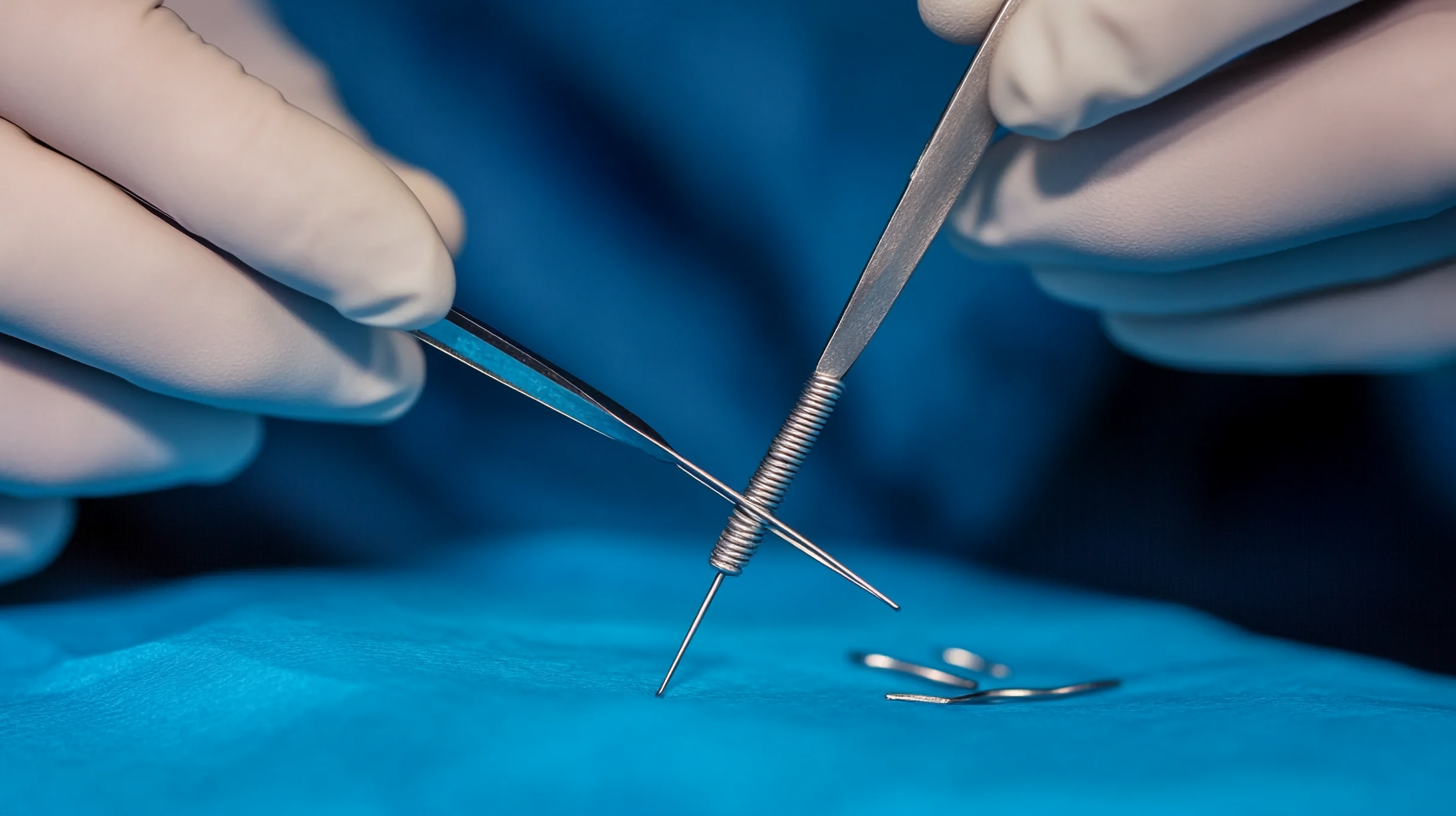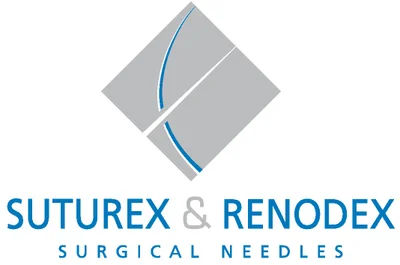You have successfully logged out.
7 Secrets to Finding the Best Plastic Surgery Suture for Your Practice
As the landscape of plastic surgery continuously evolves, one critical element remains at the forefront of surgical success: the choice of Plastic Surgery Suture. With the global plastic surgery market projected to reach $66 billion by 2025, the demand for advanced suturing techniques and materials is more crucial than ever. According to a recent report by MarketsandMarkets, innovations in suture technology not only enhance patient outcomes but also drive efficiency in surgical practices. Surgeons are increasingly seeking suture solutions that offer superior handling, tensile strength, and minimal scarring for their patients. This blog will uncover seven essential secrets to selecting the best Plastic Surgery Suture for your practice, ensuring you stay ahead in this competitive industry, while also addressing the technological trends shaping the future of surgical procedures.

Explore the secrets
In this in-depth analysis, we will delve into the essential aspects of choosing the right sutures that will not only improve surgical precision but also boost overall patient satisfaction. Stay tuned as we unveil insights that could transform your practice!
Understanding the Importance of Choosing the Right Suture Type for Plastic Surgery
 Choosing the right suture type is crucial in plastic surgery, directly impacting both aesthetic outcomes and patient satisfaction. A study published in the Aesthetic Surgery Journal indicates that sutures account for a significant portion of surgical complications, with improper material leading to increased rates of dehiscence and scarring. For instance, a survey conducted among plastic surgeons revealed that 30% experienced adverse outcomes when using inappropriate sutures, underlining the need for careful selection based on tissue type and wound tension.
Choosing the right suture type is crucial in plastic surgery, directly impacting both aesthetic outcomes and patient satisfaction. A study published in the Aesthetic Surgery Journal indicates that sutures account for a significant portion of surgical complications, with improper material leading to increased rates of dehiscence and scarring. For instance, a survey conducted among plastic surgeons revealed that 30% experienced adverse outcomes when using inappropriate sutures, underlining the need for careful selection based on tissue type and wound tension.
Moreover, advancements in suture technology have introduced a variety of options tailored for specific procedures. Absorbable sutures, for example, are becoming increasingly popular due to their ability to minimize postoperative discomfort while reducing the need for suture removal. Data from the American Society of Plastic Surgeons indicates that the use of modern synthetic absorbable materials has shown a 25% reduction in complication rates compared to traditional silk sutures. Understanding the unique properties of each suture type can enhance surgical techniques, optimize healing, and ultimately ensure that patients achieve the best possible results in their recovery journey.
Key Considerations When Selecting Sutures for Different Procedures
When it comes to selecting sutures for plastic surgery, understanding the specific needs of each procedure is crucial. According to a report by the American Society of Plastic Surgeons, approximately 15.6 million cosmetic surgeries were performed in 2020, highlighting the rising demand for specialized sutures that meet the needs of diverse surgical techniques. For procedures such as facelifts or breast augmentation, surgeons often prefer absorbable sutures that minimize scarring and can support healing without the need for removal.
Another key consideration involves the tensile strength and material of the sutures used in reconstructive procedures. A study published in the Journal of Reconstructive Surgery indicates that non-absorbable sutures, such as polypropylene and nylon, provide superior strength and durability, making them ideal for areas under tension. Additionally, choosing sutures with a proper diameter is essential; thicker sutures can create more trauma to tissues, while finer sutures may not provide enough support for high-tension areas. By carefully evaluating these factors, surgeons can enhance patient outcomes and achieve optimal results across various plastic surgery procedures.
7 Secrets to Finding the Best Plastic Surgery Suture for Your Practice
| Suture Type | Material | Absorbable | Common Uses | Recommended Needle Type |
|---|---|---|---|---|
| Monofilament | Polypropylene | No | Skin closure, vascular surgery | Cutting Needle |
| Braided | Silk | No | Cardiac and ophthalmic surgeries | Taper Needle |
| Absorbable | Polyglycolic Acid | Yes | Subcutaneous tissue, gynecological procedures | Cutting Needle |
| Monocryl | Polyglecaprone | Yes | Dermatological surgeries | Taper Needle |
| Vicryl | Polyglactin | Yes | General soft tissue surgeries | Cutting Needle |
The Impact of Suture Material on Healing and Patient Outcomes
The choice of suture material in plastic surgery plays a crucial role in healing and overall patient outcomes. Different types of sutures can affect tissue tension, scarring, and even the risk of infection. For instance, absorbable sutures break down over time, allowing for natural healing without the need for removal, while non-absorbable sutures provide lasting support for more complex wounds. Understanding the physical properties of these materials, including tensile strength and elasticity, is essential for surgeons aiming to optimize postoperative recovery.
Furthermore, the chemical composition of sutures can influence inflammatory responses and allergenic reactions in patients. Natural materials, such as catgut, may provide advantages in specific situations but could also pose risks for individuals with sensitivities. On the other hand, synthetic sutures offer a wide range of options designed for specific tissues and applications. By carefully selecting the right suture material, surgeons can minimize complications, enhance aesthetic results, and ultimately improve patient satisfaction. Such informed decisions contribute significantly to the success and reputation of a practice in the competitive field of plastic surgery.
Impact of Suture Material on Healing and Patient Outcomes
Innovative Suture Techniques to Enhance Surgical Results
In the ever-evolving field of plastic surgery, the choice of sutures can profoundly impact the surgical outcome.
Innovative suture techniques are redefining how surgeons achieve precision and excellence in their work.
One of the most exciting advancements is the use of absorbable sutures that provide long-lasting support while eliminating the need for removal,
simplifying post-operative care for both patients and practitioners. These sutures help in reducing scarring and promote optimal healing, allowing for a smoother recovery process.
Another noteworthy technique is the application of barbed sutures, which offer a significant advantage by providing multidirectional support without the need for knots.
This technique not only saves time during the procedure but also decreases tension on delicate tissues,
ultimately enhancing the cosmetic results. Combining these innovative approaches with careful attention to suture materials and placement can elevate a surgeon's practice,
ensuring that every patient receives the best possible care and results in their surgical journey.
Comparative Benefits of Absorbable vs. Non-Absorbable Sutures in Practice
When it comes to plastic surgery, choosing the right suture is crucial for optimal healing and aesthetic outcomes. One key decision is whether to use absorbable or non-absorbable sutures. Absorbable sutures, made from materials like polyglycolic acid, break down naturally in the body, eliminating the need for removal and reducing patient discomfort. They are particularly beneficial in internal wounds or areas where future scarring should be minimized.

On the other hand, non-absorbable sutures, such as nylon or polypropylene, provide long-lasting support for wounds that require additional tensile strength. These sutures are ideal for skin closures and areas subject to tension, ensuring they withstand the healing process. However, they necessitate a follow-up appointment for removal, and patients may wish to avoid that inconvenience.
Tip: When selecting sutures, consider the specific needs of each patient and surgical site. A thorough assessment can help you determine the appropriate type based on factors like healing time, area of incision, and patient lifestyle. Tip: Stay informed about the latest materials and techniques in suture technology. Continuous education can enhance your practice and improve patient outcomes, making the choice between absorbable and non-absorbable sutures clearer and more effective.
